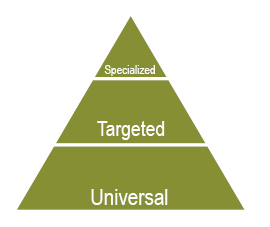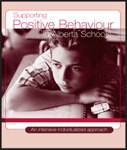
|
Universal Supports benefit all students
- Use classroom discussion, modelling and role-play to teach students the importance of using polite language and pleasant tone of voice when it is necessary to disagree with others.
- Work with students to collaboratively develop step-by-step strategies for disagreeing in an agreeable way, such as the following.
–
- Acknowledge the other person's point-of-view or request (e.g., "I understand you want to ….").
- State your position (e.g., "I'd like to ….").
- Offer a rationale (e.g., "I think this is a good idea because ….").
- Ask the other person to consider your position (e.g., "Would you
consider …?").
- If necessary, offer a compromise.
- If you cannot reach an agreement, consider if you need to:
- comply to the request with no further comments (e.g., in response to an adult's request)
- agree to disagree and walk away.
- Teach, practise and review the strategies and brainstorm typical situations in which it may be appropriate to use a specific strategy.
- Post visual reminders of the importance of disagreeing in an agreeable way and/or strategies for reaching an agreement. When appropriate, collaborate with students to develop these reminders.
- Use descriptive feedback to acknowledge individual students who use positive strategies to voice their disagreement and resolve differences with others.
|
|

|
Targeted Supports benefit students with more specific needs
- Work with individual students or small groups of students to brainstorm situations where it might be necessary to disagree with others.
- Individually or in small groups, teach, practise and review strategies for expressing disagreement positively and proposing compromises.
- Develop self-monitoring strategies with individual students to reflect on and keep track of how they express disagreement and resolve differences. For some students, it may be necessary to include a systematic approach to reinforcement as part of the self-monitoring process.
|
Parents know their children well and can offer insights on how to support
their social and emotional well-being. There is strength in collaborating
on strategies that could be used at home, at school and in the community.
|

|
Specialized Supports benefit the small number of students with sensory, physical, cognitive or behavioural needs that require intensive, individualized interventions
- In exceptional cases, an individual student may need 1:1 adult support to facilitate communication and social interaction with other school staff and students. This support should be provided as unobtrusively as possible and should include developing strategies for the student to communicate both agreement and disagreement when offered choices.
|
|








